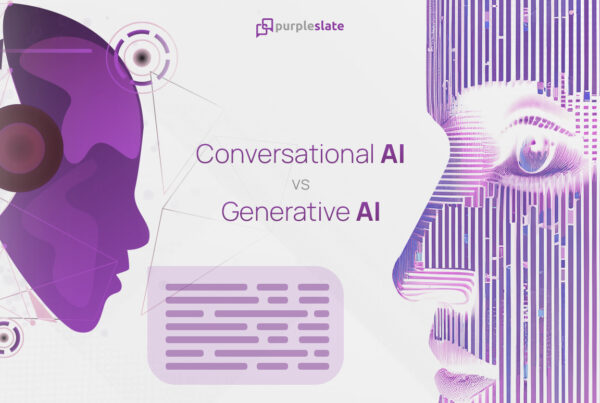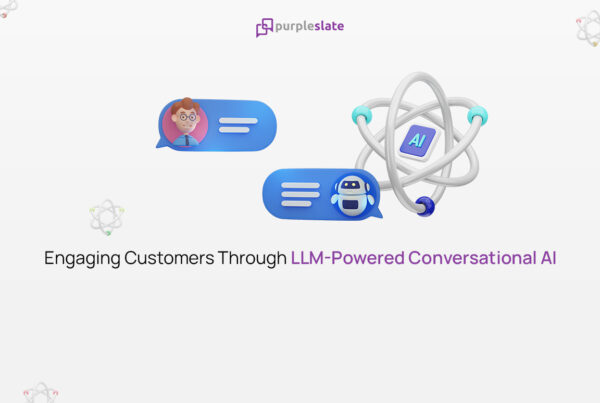
Introduction
In the rapidly evolving landscape of customer engagement and user experience, businesses are constantly seeking innovative ways to enhance communication and streamline interactions with their customers. Traditional web forms have long been a staple for collecting user data and feedback, but the emergence of Conversational AI is poised to revolutionize this approach.
Conversational AI, powered by advanced natural language processing (NLP) algorithms, offers a dynamic and personalized interaction that goes beyond the limitations of static web-forms. In this blog, we’ll delve into the seven compelling reasons why Conversational AI is poised to replace your old web-forms and take your customer engagement to the next level.
Enhanced User Experience
Conversational AI provides an intuitive and human-like interaction that mirrors real-life conversations. Users can engage with a virtual assistant in a natural, conversational manner, eliminating the need to navigate through complex and sometimes confusing web-forms. This streamlined process enhances user experience, reduces friction, and encourages more meaningful interactions.
Imagine visiting a website to inquire about a product or service. Instead of being greeted by a static form, you’re welcomed by a friendly virtual assistant ready to assist you. You can simply ask questions or provide information in your own words, making the interaction feel like a genuine conversation. This level of engagement not only makes users feel valued but also increases their likelihood of completing their desired action.
Personalization and Contextual Understanding
Unlike traditional web-forms, Conversational AI has the ability to understand context and personalize responses based on user input. It can recall previous interactions, user preferences, and purchase history, providing a tailored experience that makes customers feel valued and understood.
Consider a scenario where a user is looking for recommendations on a fashion website. With Conversational AI, the virtual assistant can remember the user’s style preferences from previous conversations and offer suggestions that align with their taste. This level of personalization creates a sense of connection and helps users find exactly what they’re looking for, ultimately driving conversions and building brand loyalty.
Faster Data Collection
Conversational AI accelerates the data collection process by guiding users through questions one step at a time. Users no longer need to scroll through lengthy forms, filling in multiple fields. Instead, they can answer questions in a back-and-forth conversation, significantly reducing the time and effort required to provide information.
Think about the last time you had to fill out a detailed web-form, entering information like your name, address, and contact details. With Conversational AI, this process becomes much more efficient. The virtual assistant can ask for each piece of information separately, making the interaction feel like a series of quick and easy questions. This not only saves time for the user but also ensures accurate and complete data collection for the business.
Higher Completion Rates
Lengthy web-forms often deter users from completing the process, leading to abandoned forms and missed opportunities. Conversational AI breaks down complex forms into manageable chunks, increasing completion rates and ensuring that businesses capture valuable user data.
Conversational AI addresses the issue of web form abandonment by presenting questions in a conversational format, guiding users through the process step by step. This approach reduces the cognitive load on users and encourages them to provide the information needed to complete the interaction.
Real-time Issue Resolution
Conversational AI can handle customer inquiries and resolve issues in real time, providing instant gratification and support. Whether it’s answering frequently asked questions, troubleshooting problems, or assisting with product recommendations, the immediacy of Conversational AI enhances customer satisfaction and loyalty.
Instead of searching a website’s FAQ section to resolve an issue or waiting for a response from customer experience after filling in a web form, you can chat with a virtual assistant and receive an immediate answer. This level of responsiveness not only saves time but also prevents frustration and helps users make informed decisions. Additionally, the ability to resolve issues in real-time contributes to positive brand perception and encourages repeat business.
Omnichannel Accessibility
Conversational AI isn’t limited to a single platform. It can be seamlessly integrated across various communication channels, including websites, mobile apps, social media platforms, and messaging apps. This ensures that users can engage with your business on their preferred channels, further enhancing accessibility and engagement.
Consider a user who prefers to communicate through a messaging app rather than a website. With Conversational AI, they can initiate a conversation and receive assistance directly within the messaging app. In a scenario where they have to engage the organization through their social media channel, the conversational AI bot can converse with the user without losing the context of the conversation. This omnichannel accessibility accommodates diverse user preferences and extends the reach of your customer engagement efforts.
Data-Driven Insights and Continuous Improvement
Conversational AI platforms offer robust analytics and insights into user interactions. Businesses can gather valuable data on user preferences, pain points, and frequently asked questions. This information can be used to fine-tune the AI’s responses, optimize user journeys, and make informed decisions for ongoing improvements.
Imagine having access to detailed analytics that reveal how users are interacting with your virtual assistant. You can discover which questions are asked most frequently, identify any bottlenecks in the conversation flow, and pinpoint areas where users may be dropping off. Armed with this data, you can make data-driven adjustments to enhance the user experience, address pain points, and ensure that the Conversational AI continues to provide value over time.
Conclusion
As customer expectations continue to evolve, embracing innovative solutions like Conversational AI becomes essential for businesses looking to stay ahead of the curve. The limitations of traditional web-forms are evident, and the benefits of Conversational AI are undeniable. From enhancing user experience and personalization to accelerating data collection and improving completion rates, Conversational AI offers a transformative approach to customer engagement.
By replacing your web-forms with Conversational AI, you can create a dynamic and seamless interaction that fosters lasting relationships with your customers. It’s time to embrace the future of customer engagement – it’s time for Conversational AI. With its ability to provide enhanced user experiences, personalized interactions, and real-time issue resolution, Conversational AI is poised to revolutionize the way businesses engage with their customers. By embracing this technology, you can create a more efficient, effective, and enjoyable customer journey that sets your brand apart in today’s competitive landscape.
Conversational AI can revamp the entire gamut of customer experience not only from the perspective of web forms. Want to know more? Check out our blog on how Conversational AI can drive 10X customer engagement.




